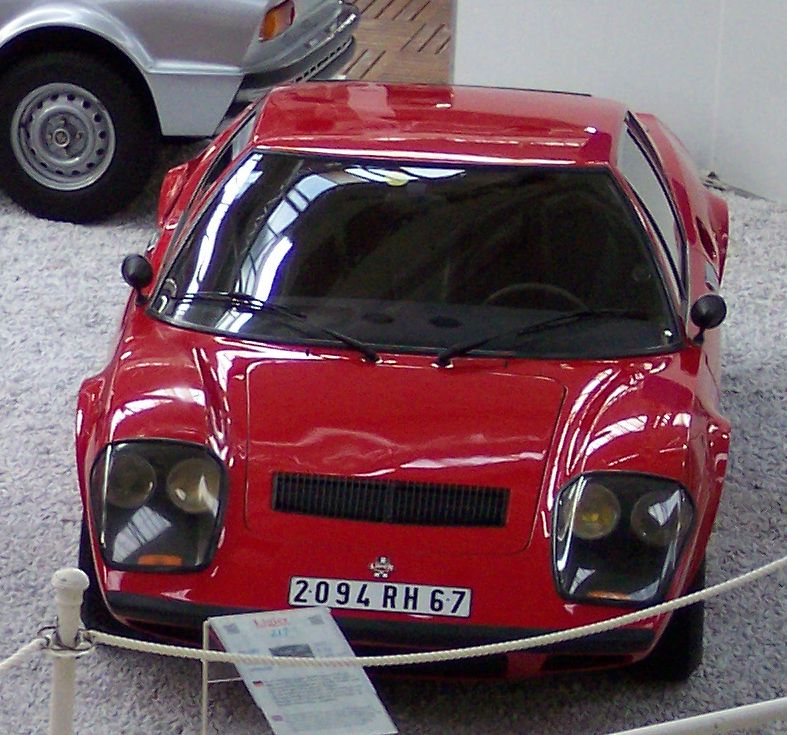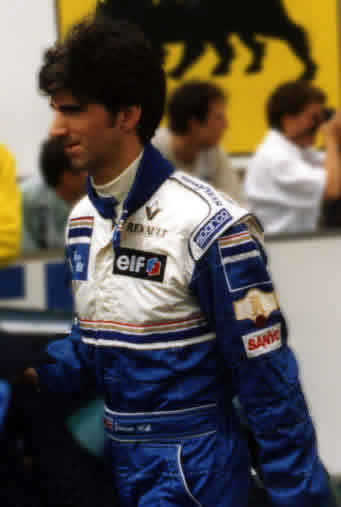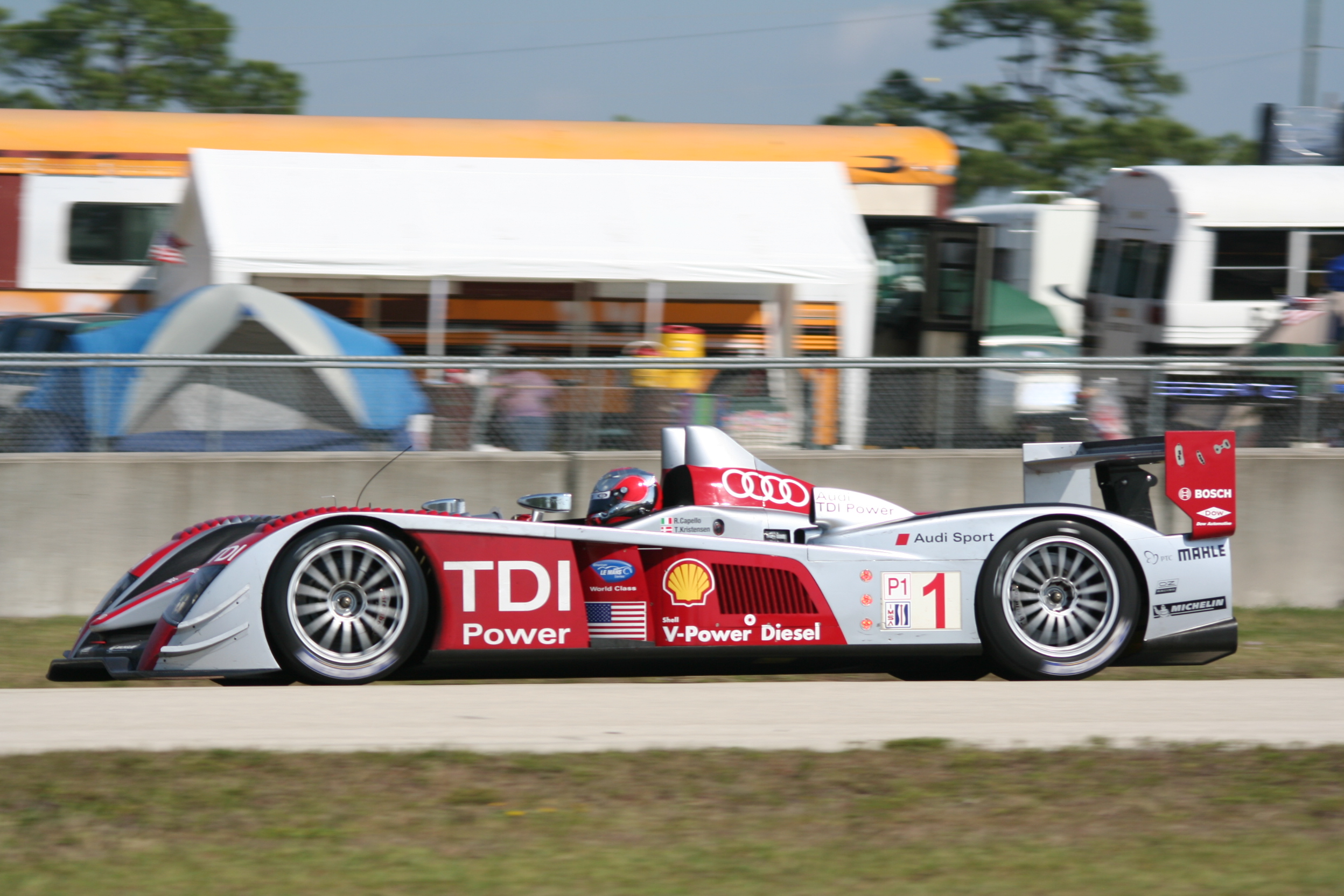|
Ligier
Ligier (() is a French automobile and minibus maker created by former racing driver and rugby player Guy Ligier (1930–2015), specialized in the manufacturing of microcars. Ligier is best known for its involvement in the Formula 1 World Championship between 1976 and 1996. In collaboration with Automobiles Martini, the Ligier-Martini entity offered sports prototypes used in endurance or hillclimbing ( CN). After the announcement of the creation of the new category LMP3 by the ACO, Ligier and Martini associated with Onroak Automotive (the manufacturer department of OAK Racing) to offer a full range of prototypes ( CN, LMP3, LMP1 and LMP2). History The firm entered the automobile business with the Ligier JS2, a mid-engined sports car for the road initially powered by a Ford V6 and from 1971 by the same Maserati V6 engine as the Citroën SM. The JS2 was considered by many as a well-designed car with a very good power-to-weight ratio. The Ligier motorcars were all designated with ... [...More Info...] [...Related Items...] OR: [Wikipedia] [Google] [Baidu] |
Guy Ligier
Guy Camille Ligier (12 July 1930 – 23 August 2015) was a French racing driver and team owner. He maintained many varied and successful careers over the course of his life, including rugby player, butcher, racing driver and Formula One team owner. The early years The son of a farmer, Ligier was orphaned at 7 years of age. He left school in his mid-teens and went to work as a butcher's assistant in his home town of Vichy. Athletic and competitive, he became a French rowing champion in 1947. He also had a passion for rugby and was good enough to play for the French Army during National Service earning a place on the French national B team. His rugby career was cut short due to injuries. Determined to become successful, Ligier saved all of the money he earned working as a butcher to fund his aspirations. In 1960, he rented a backhoe and, a short time later, bought a bulldozer of his own and went into the construction business. With help from Pierre Coulon, Vichy's Mayor, he founde ... [...More Info...] [...Related Items...] OR: [Wikipedia] [Google] [Baidu] |
Ligier JS2
The Ligier JS2 is a mid-engined sports coupé that was built by Ligier in the French commune of Abrest near Vichy in the department of Allier between 1971 and 1975. Road-going and competition versions were built. Conception and predecessor Guy Ligier and racing teammate, business partner and close friend Jo Schlesser talked about together building a car that overcame the shortcomings of the cars they were driving. Following Schlesser's death Ligier retired from racing and established Automobiles Ligier in 1968. The JS2 was the company's second product, the first having been the JS1. That car was built on an aluminum chassis designed by Chief Engineer Michel Têtu with fibreglass bodywork by Frua. Four different engines were used at different times - two versions of the Cosworth FVA DOHC inline four-cylinder engine and two versions of the Ford Cologne OHV V6 engine. The Cosworths were mated to Hewland transaxles while the Fords were bolted to a modified transaxle from the Ci ... [...More Info...] [...Related Items...] OR: [Wikipedia] [Google] [Baidu] |
Onroak Automotive
Ligier Automotive is a French company which designs, manufacturers, and sells racing cars, specifically sports prototypes for various international series. Onroak was founded in 2012 by Jacques Nicolet who split the design, manufacturing, and sales divisions of his OAK Racing team into an independent company. Onroak has since formed an agreement with Philippe Ligier to develop new cars under the Ligier title. On 31 December 2018, it was announced that Onroak Automotive would be rebranded to Ligier Automotive as part of a rebranding and reorganization of Everspeed's automotive assets. History Onroak's roots can be traced to December 2009 when OAK Racing reached an agreement with Pescarolo Sport to take over their manufacturing arm, specifically the continued construction and co-development of the Pescarolo 01 Le Mans Prototype that had been designed in 2007. OAK, while under their previous title of Saulnier Racing, had been a Pescarolo customer since 2008, campaigning two cars i ... [...More Info...] [...Related Items...] OR: [Wikipedia] [Google] [Baidu] |
1996 Formula One Season
The 1996 FIA Formula One World Championship was the 50th season of FIA Formula One motor racing. The championship commenced on 10 March and ended on 13 October after sixteen races. Two World Championship titles were awarded, one for Drivers and one for Constructors. Damon Hill won the Drivers' Championship two years after being beaten by a point by Michael Schumacher, making him the first son of a World Champion (his father Graham having won the title in and ) to have won the title himself. Hill, who had finished runner-up for the past two seasons, was seriously threatened only by his teammate, newcomer Jacques Villeneuve, the 1995 IndyCar and Indianapolis 500 champion. Williams-Renault easily won the Constructors' title, as there was no other competitor strong enough to post a consistent challenge throughout the championship. This was also the beginning of the end of Williams's 1990s dominance, as it was announced that Hill and designer Adrian Newey would depart at the concl ... [...More Info...] [...Related Items...] OR: [Wikipedia] [Google] [Baidu] |
1976 Formula One Season
The 1976 Formula One season was the 30th season of FIA Formula One motor racing. It featured the 1976 World Championship of Drivers and the 1976 International Cup for Formula 1 Manufacturers . The two titles were contested over a sixteen race series which commenced on 25 January and ended on 24 October. Two non-championship races were also held during the 1976 season. In an extraordinarily political and dramatic season, the World Championship went to McLaren driver James Hunt by one point from Ferrari's defending champion Niki Lauda, although Ferrari took the International Cup for Formula 1 Manufacturers. Hunt had moved from the Hesketh team to McLaren, taking the place of dual World Champion Emerson Fittipaldi who had moved to drive for his brother Wilson's Fittipaldi Automotive team for the season. The controversy began in Spain where Hunt was initially disqualified from first place, giving the race to Lauda, only for the decision to be overturned on appeal months later. ... [...More Info...] [...Related Items...] OR: [Wikipedia] [Google] [Baidu] |
Jo Schlesser
Joseph Schlesser (18 May 1928 – 7 July 1968) was a French Formula One and sports car racing driver. He participated in three World Championship Grands Prix, including the 1968 French Grand Prix in which he was killed. He scored no championship points. He was the uncle of Jean-Louis Schlesser who himself became a Formula One driver in the 1980s. Early career Schlesser began his motor sport career in 1952, when he rallied a Panhard before, in 1954, trying the then popular French class of racing known as Monomill. His career was then interrupted for three years whilst he was working in Mozambique but he returned to Europe in 1957 when he finished second in the Rome–Liège–Rome Rally in a Mercedes. He then raced a Ferrari 250 GT but without much success until 1960 when he finished second in class at the Nürburgring 1000 km and second overall at Rouen. He also raced a Cooper in Formula Two in 1960 but only achieved a sixth place at Syracuse. In 1961 his season was cut short ... [...More Info...] [...Related Items...] OR: [Wikipedia] [Google] [Baidu] |
Automobiles Martini
Automobiles Martini is a constructor of Formula racing cars from France, founded by Renato "Tico" Martini in 1965, when Martini and partner Bill Knight founded the Winfield Racing School at the Magny-Cours circuit, in France. Martini's first car was the MW3, a Formula Three car built in 1968. Although better known for their successful efforts in Formula Three, Formula Renault and other lower formulae during the 1970s and 1980s, they are also known for having taken part in nine rounds of the 1978 Formula One season with the single MK23 chassis, giving René Arnoux (later a driver for Renault and Ferrari) his debut in Formula One. Future four time World Drivers' Champion Alain Prost also used a Renault powered Martini to win the 1978 and 1979 French Formula Three Championship while driving for French team Oreca. With Reynard, Ralt and Dallara crowding out the F3 market in the late 1980s, Martini reduced their customer program, keeping a stubborn presence in the French F3 champions ... [...More Info...] [...Related Items...] OR: [Wikipedia] [Google] [Baidu] |
LMP3
A Le Mans Prototype (LMP) is the type of sports prototype race car used in the 24 Hours of Le Mans, FIA World Endurance Championship, IMSA SportsCar Championship, European Le Mans Series and Asian Le Mans Series. Le Mans Prototypes were created by the Automobile Club de l'Ouest (ACO). The technical requirements for an LMP include bodywork covering all mechanical elements of the car. Currently, there are three classes within Le Mans Prototypes, designated LMP1, LMP2, and LMP3. While not as fast as open-wheel Formula One cars around a track, LMP1s were the fastest closed-wheel racing cars used in circuit racing. Le Mans Prototypes are considered a class above production-based grand tourer cars, which compete alongside them in sports car racing. Later LMP1 designs included hybrid cars that use electric motors to assist acceleration. The Le Mans Prototype LMP1 class has been replaced by Le Mans Hypercars in the FIA World Endurance Championship, and the 24 Hours of Le Mans from the ... [...More Info...] [...Related Items...] OR: [Wikipedia] [Google] [Baidu] |
LMP1
A Le Mans Prototype (LMP) is the type of sports prototype race car used in the 24 Hours of Le Mans, FIA World Endurance Championship, IMSA SportsCar Championship, European Le Mans Series and Asian Le Mans Series. Le Mans Prototypes were created by the Automobile Club de l'Ouest (ACO). The technical requirements for an LMP include bodywork covering all mechanical elements of the car. Currently, there are three classes within Le Mans Prototypes, designated LMP1, LMP2, and LMP3. While not as fast as open-wheel Formula One cars around a track, LMP1s were the fastest closed-wheel racing cars used in circuit racing. Le Mans Prototypes are considered a class above production-based grand tourer cars, which compete alongside them in sports car racing. Later LMP1 designs included hybrid cars that use electric motors to assist acceleration. The Le Mans Prototype LMP1 class has been replaced by Le Mans Hypercars in the FIA World Endurance Championship, and the 24 Hours of Le Mans from the ... [...More Info...] [...Related Items...] OR: [Wikipedia] [Google] [Baidu] |
LMP2
A Le Mans Prototype (LMP) is the type of sports prototype race car used in the 24 Hours of Le Mans, FIA World Endurance Championship, IMSA SportsCar Championship, European Le Mans Series and Asian Le Mans Series. Le Mans Prototypes were created by the Automobile Club de l'Ouest (ACO). The technical requirements for an LMP include bodywork covering all mechanical elements of the car. Currently, there are three classes within Le Mans Prototypes, designated LMP1, LMP2, and LMP3. While not as fast as open-wheel Formula One cars around a track, LMP1s were the fastest closed-wheel racing cars used in circuit racing. Le Mans Prototypes are considered a class above production-based grand tourer cars, which compete alongside them in sports car racing. Later LMP1 designs included hybrid cars that use electric motors to assist acceleration. The Le Mans Prototype LMP1 class has been replaced by Le Mans Hypercars in the FIA World Endurance Championship, and the 24 Hours of Le Mans from the ... [...More Info...] [...Related Items...] OR: [Wikipedia] [Google] [Baidu] |
Power-to-weight Ratio
Power-to-weight ratio (PWR, also called specific power, or power-to-mass ratio) is a calculation commonly applied to engines and mobile power sources to enable the comparison of one unit or design to another. Power-to-weight ratio is a measurement of actual performance of any engine or power source. It is also used as a measurement of performance of a vehicle as a whole, with the engine's power output being divided by the weight (or mass) of the vehicle, to give a metric that is independent of the vehicle's size. Power-to-weight is often quoted by manufacturers at the peak value, but the actual value may vary in use and variations will affect performance. The inverse of power-to-weight, weight-to-power ratio (power loading) is a calculation commonly applied to aircraft, cars, and vehicles in general, to enable the comparison of one vehicle's performance to another. Power-to-weight ratio is equal to thrust per unit mass multiplied by the velocity of any vehicle. Power-to-weight ... [...More Info...] [...Related Items...] OR: [Wikipedia] [Google] [Baidu] |
Citroën SM
The Citroën SM is a high-performance coupé produced by the French manufacturer Citroën from 1970 to 1975. The SM placed third in the 1971 European Car of the Year contest, trailing its stablemate Citroën GS, and won the 1972 ''Motor Trend'' Car of the Year award in the U.S. History In 1961, Citroën began work on 'Project S' – a sports variant of the Citroën DS. As was customary for the firm, many running concept vehicles were developed, increasingly complex and upmarket from the DS. At some stage in the 9-year project, it evolved from developing a faster variant of the 1955 DS to developing an entirely new, thoroughly engineered car – in terms of engineering effort, a replacement for the high volume DS model. Citroën purchased Maserati in 1968 with the intention of harnessing Maserati's high-performance engine technology to produce a true Gran Tourer car, combining the sophisticated Citroën suspension with a Maserati V6. The result was the Citroën SM, first ... [...More Info...] [...Related Items...] OR: [Wikipedia] [Google] [Baidu] |



.jpg)





